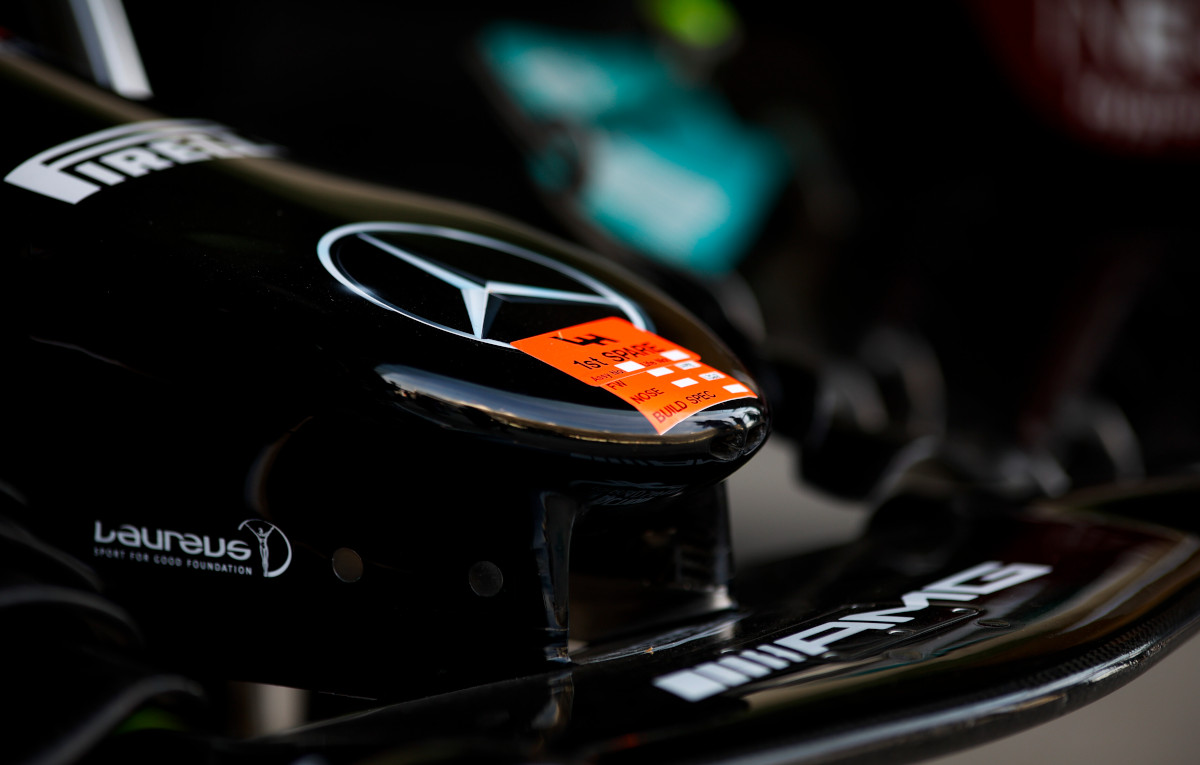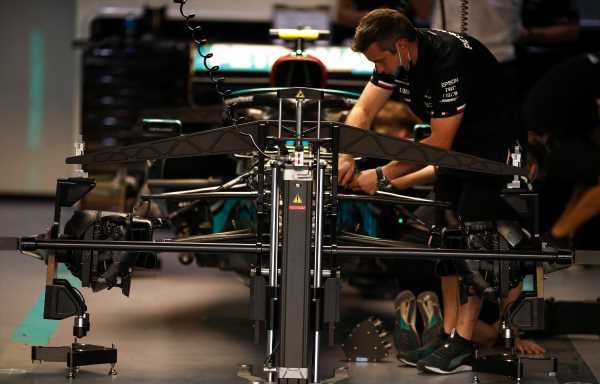An all-new chassis means that Mercedes are searching for the ideal placement for their upcoming power unit to avoid impacting lap time.
The 2022 challengers will be looking far different from their predecessors, after Formula 1 introduced new regulations and larger 18-inch tyres, all with the aim of promoting closer racing and more overtaking.
And while the cars are being created from scratch, the power unit manufacturers are also busy perfecting their latest PUs. It will also be the last of this era with a freeze on engine development then set to come in until 2025, at which point the new generation of power units are then scheduled to arrive for 2026.
This then means that the teams face a tricky task in ensuring that the power unit finds the best home possible inside the new chassis, therefore making minimal impact on the lap time-sensitive parts of the cars.

Speaking in a Mercedes YouTube video, Hywel Thomas, managing director of Mercedes High Performance Powertrains, said: “Every year we take a look at the power unit and the way that it sits inside the chassis in order to give us the best lap time.
“With 2022 being an all-new chassis, what that means is that we have an opportunity to look at everything again.
“There are areas on the car which will be very sensitive to lap time. And there’ll be other areas in the car which are less sensitive. And what we’re trying to do with the PU is to make sure that we stay as far away as we can from the sensitive areas to give as much flexibility as possible for the car designers, and to package the parts of the PU into areas where there’s less sensitivity.
“So what that means is working hand-in-glove with the chassis department, and with all those engineers, to make sure that the PU fits in exactly where it needs to, to make sure we can make the fastest overall package.”
The power unit freeze will actually come in two stages, with Thomas explaining that the “electrical systems” will be frozen “midway through the year”, so the only upgrade work possible from there will be to address reliability problems.
There is also the new fuel to contend with, since Formula 1 has switched to an E10 fuel for the internal combustion engine, which must be made of 10% ethanol, whereas before, manufacturers could choose the bio-components which formed the 5.75% of biofuel in the mixture.
So, all of these factors are creating a “huge challenge” for Mercedes’ engine base at Brixworth, as well as their chassis team at Brackley.
“The PU has a frozen performance spec. And what does that mean? It means that from the start of 2022 until the new PU, which we’re expecting to come in 2026, the performance of the engine is frozen,” Thomas explained.
“And from midway through the year, the performance of the electrical systems is also frozen from a performance perspective. So what that means is we will not be able to bring performance upgrades during the year. It’ll only be possible to do reliability upgrades.
“So with the new fuel, the freeze to performance of the PU over the course of the season, and the whole new car, the whole new aerodynamics and fitting the PU within it, there is a huge challenge for everyone involved, and especially team up in HPP.”
Mercedes are set to launch their 2022 challenger, the W13, on 18 February in an online event from Silverstone.
Source: Read Full Article
